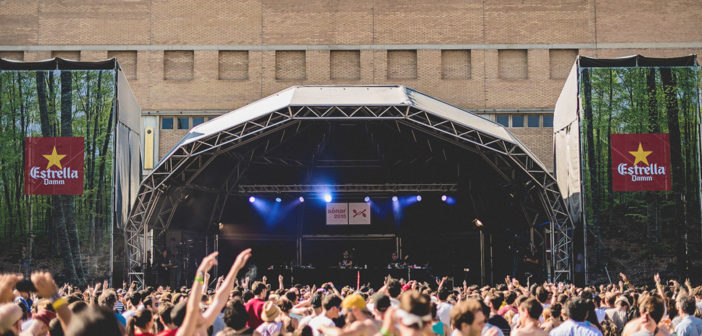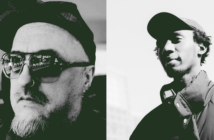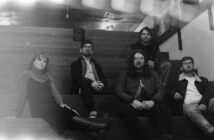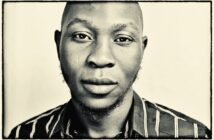Sonar, along with the other big Barcelona festival Primavera Sound, mark the unofficial start of the European summer festival circuit and generally set the high water mark for what can be expected at other festivals to come. Size, accessibility and quality are not the only attributes necessary to achieve this status and impact. Innovation is also critical. Sonar in particular has undergone a number of important changes over the last few years to keep growing and to stay ahead of the curve. 2016 promises to be no different and we highlight some of the key innovations of Sonar to look out for in 2016.
Sonar +D
Sonar +D has rapidly become one of the most essential parts of the Sonar experience and is a fascinating crucible of ideas and innovation. Sonar +D is essentially a congress and trade exhibition space that counterbalances the summer party outside by offering an intellectual and contemplative zone where new design and technology innovation can be shown and discussed in different forums and formats. Last year’s congress beautifully captured the core ideas of cyber punk and virtual reality, putting the latest headsets on display alongside talks, including one by writer Bruce Sterling, projected virtual design spaces and interactive neuroscience tools. Last year the Barcelona Supercomputing Center (BSC-CNS) also contributed one of the more fascinating and controversial works What you did. The project collected and visualised data from an App loaded onto the mobile of volunteers allowing movements of attendees to be tracked and the possibility of calculating tendencies and predicting behaviour through data mining.
The BSC-CNS project segues nicely with the themes of this year’s Sonar +D which is Big Data and the perfect ambassador to bridge last year and this is one of this year’s headlining artists, Jean-Michel Jarre, who recently collaborated with NSA whistleblower Edward Snowden. This year the British artist collective Semiconductor (Ruth Jarman and Joe Gerhardt) will present Earthworks which is an interactive visual and audio representation of seismic and other data like carbon dioxide levels. Many will also recognise parallels with Herman Kolgen’s Seismic. There will be similar works and discussion of art based on scientific data from several of the world’s leading science institutes including the Atacama Large Millimeter/submillimeter Array (ALMA) telescope installation in Chile who will present sounds captured from space, CERN – the European Organization for Nuclear Research who have a resident art program as does Google with its Data Arts Team also presenting. Arguably the more sinister side of Big Data is the ability to use algorithms to predict behaviour and likes, and taking up this thread will be Spotify, amongst others. Sonar +D also rounds off with plenty of talks from some of the performers and special guest Brian Eno.
Spanish artists
Last year was a high water mark for Spanish electronica in general and not just at Sonar. Rising up in defiance of the long running political and economic crisis, Spanish youth have managed to build a healthy and diverse scene from limited resources, particularly in Catalonia and Asturias. The number of emerging Spanish labels and artists who quickly establish a widely regarded presence both inside and beyond the borders is impressive. Acts to look out for include bRUNA y Wooky, veterans of Sonar and also some of the identities behind the important Lapsus network, will present a new combined project. Alongside them will be the oddball electronic-pop of Niño de Elche that also hides a deeper political side. Miguel Gil Tertre’s Strand project also looks like one of the stand outs of the local scene with both his beats and sounds coming from a more considered leftfield IDM influence that doesn’t forsake any of his urban and hip hop roots. In addition, he will premiere some of his own visual works making him one of the more complete artists from the peninsula. Finally, there are plenty of old hats as always like headliners Angel Molina, Paco Osuna, Alizzz and Coyu, who will take extra inspiration from this year’s cat-themed image.
Mutant sounds
Where is the cutting edge of modern electronic music? Most would say that it is the hyper mutation of bass music in recent years that has catalysed the evolution of electronic music. One reason for this might be the more varied beat templates of bass offer a lot more possibility going forward when really playing and painting with sounds and moving away from the dance floor, but still keeping it rhythmic. Bass music in particular also seems to evolve out of fiercely local scenes, almost in isolation, and which assimilate and fuse their local multi-cultural roots with a global dance sound. These scenes include Chicago’s footwork, Lisbon’s kuduro-influenced sound, grime from London (look out for Skepta and Stormzy) and the myriad of local networks across Africa, particularly Shangaan, represented this year by Nozinja, and most recently Gqom in Durban, all of which have brought their local flavour to the world. New amongst these is the fertile scene is Paris, including Bambounou of the Clek Clek Boom label who played last year and Acid Arab (Parisian duo Guido Minisky and Herve Carvalho) who, as the name suggest, mix club acid techno with Arabian-influenced music from the Maghreb and therefore capture innately the diversity and multiculturism of modern France. Another Parisian artist tapping into this is Warp-artist Lafawndah who also draws from her Iranian and Egyptian roots. Fellow Warp artist Kelela’s slippery take on pop and R&B should also be another highlight. Another fine example of a sound growing in isolation is the recent and belated broad appreciation of Soichi Terada whose unique take on video game-influenced house was largely ignored at the time as it arose in Japan and thus away from the usual geographical heartland of house.
Back on the techno grid, there is plenty of scope for the unexpected this year with some interesting collaborations including much celebrated Ben UFO teaming up with Helena Hauff, and DVS1 joining forces with Rødhåd to finish off Saturday night.
Raster Noton
The Raster Noton stable of artists has had a long and important relationship with Sonar having featured in numerous of the festival line ups over the years. This year the label has been given the privilege of celebrating their 20th anniversary with a special showcase of audio-visual material. Featured artists will be Alva Noto (solo project from label co-founder Carsten Nicolai coming off the success of his soundtrack work on The Revenant with Ryuichi Sakamoto and his album Xerrox Vol. 3 from last year) and Byetone (label co-founder Olaf Bender who is one on of the festivals most admired performers for his gritty dance floor take on glitch techno and his unswerving and compelling visuals). However, perhaps most will be eager for the return of Cyclo, the project off Nicolai and Ryoji Ikeda who himself has featured in several of the most ground breaking performances at Sonar over the years. All three artists will deliver cutting edge audio-visual works in Sonar’s dark and deep Sonar Complex stage on Saturday day.
SonarCar
Normally the bastion of outsider house and techno, the SonarCar stage, so named for being alongside the bumper cars, will this year host something completely different. Friday night sees a seven hour set from everyone’s favourite Four Tet whereas Saturday will see an equally long set by veteran Laurant Garnier. Both are great and eclectic selectors who can manage patient builds and unexpected turns when given the chance, and seven hours straight will certainly give them this chance. So a pit stop at the manic central stage seems like something a little different to look forward to this year.’
The 23rd edition of Sonar Barcelona is on the 16th, 17th and 18th of June 2016. More information here.
Cyclic Defrost has been visiting Sonar for over a decade, and this year will be no different. Stay tuned for a review. In the meantime you can check out what went down last year here.




